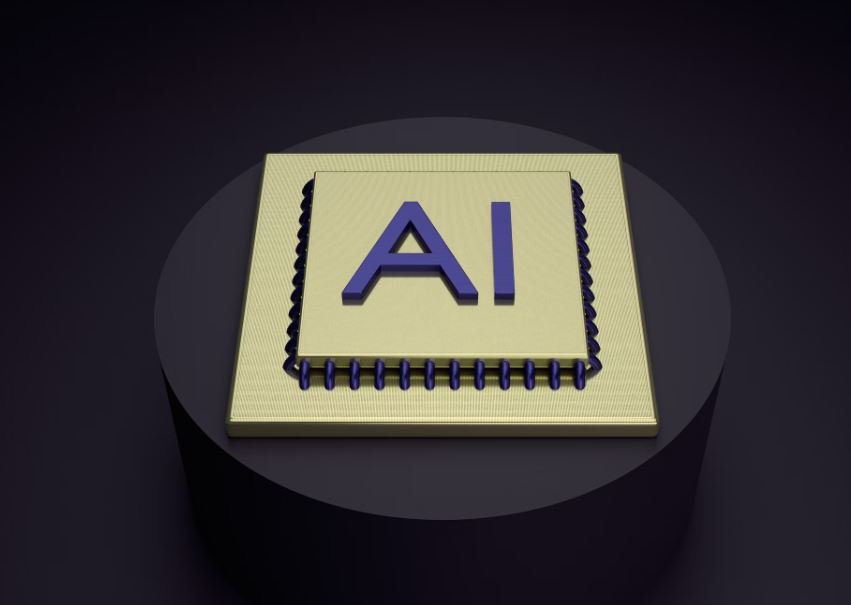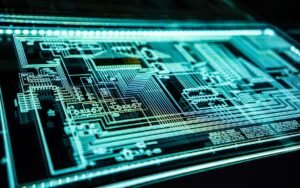AI Job Loss
Artificial Intelligence (AI) has made significant advancements in recent years, revolutionizing various industries and improving efficiency. However, there are concerns about the potential job loss associated with AI implementation. As machines and algorithms become more capable, some fear that human workers may be replaced by automation. It’s crucial to understand the impact of AI job loss and explore strategies to mitigate its effects.
Key Takeaways:
- AI advancements can lead to job loss in various industries.
- Education and reskilling programs are vital to adapt to the changing job market.
- Collaboration between humans and AI systems can generate new job opportunities.
- Policy frameworks need to be established to protect workers and provide assistance during the transition.
While AI has the potential to revolutionize industries and increase productivity, there is a concern that it may lead to job displacement. **Automation and machine learning** technologies are becoming increasingly sophisticated, bringing efficiency gains that can replace human tasks. *However, it is important to note that AI isn’t solely about replacing jobs but also augmenting human capabilities.* By automating repetitive and mundane tasks, AI can free up human workers to focus on more complex and creative work, ultimately enhancing productivity and innovation.
According to a study conducted by McKinsey Global Institute, **approximately 15% of the global workforce** could be displaced by automation in the next 15-20 years, primarily in sectors such as manufacturing, retail, and transportation. However, AI is also expected to create new job opportunities, particularly in areas that require human touch, adaptability, and critical thinking. It is crucial to prepare for these changes and equip workers with the necessary skills to remain competitive in the evolving job market.
The Impact of AI Job Loss
AI job loss can have wide-ranging consequences, both at an individual and societal level. Here are some key points to consider:
- **Unemployment:** The displacement of human workers by AI automation can lead to higher unemployment rates, impacting individuals and families. Bold proactive measures are necessary to ensure affected workers can find new employment or pursue alternative career paths.
- **Income Inequality:** Job loss due to AI can exacerbate income inequality, especially if new jobs created by AI primarily benefit a skilled elite. Strategies to bridge the income gap must be implemented to maintain social stability and equal opportunities.
- **Skills Gap:** The rapid advancement of AI technology requires continuous learning and upskilling to remain relevant in the workforce. Education and reskilling programs play a crucial role in preparing individuals for AI’s impact on jobs and equipping them with the necessary skills for new employment opportunities.
| Sector | Projected Job Displacement |
|---|---|
| Manufacturing | 25% |
| Retail | 14% |
| Transportation | 18% |
It is worth noting that AI-driven automation does not necessarily equate to complete job loss, but rather a transformation of job roles, with tasks being reassigned between machines and humans. **Collaboration between humans and AI systems**, known as robotic process automation, can result in increased productivity and the creation of new job opportunities that are complementary to AI technologies. Hybrid job roles that combine human empathy, decision-making, and creativity with AI capabilities are expected to emerge.
Strategies to Mitigate AI Job Loss Effects
To mitigate the potential negative effects of AI job loss, various strategies can be employed:
- **Education and Reskilling:** Investing in education and lifelong learning programs can equip individuals with the necessary skills to adapt to the changing job landscape. Continuous upskilling prepares workers for emerging roles and reduces the risk of job displacement.
- **Policy Frameworks:** Governments and policymakers need to establish frameworks that protect workers during AI-driven disruptions. This can include social safety nets, income support, and job transition assistance programs.
- **Collaboration and Flexibility:** Encouraging collaboration between AI systems and human workers can result in increased productivity and foster new job opportunities. Flexibility in job roles and responsibilities enables workers to adapt and evolve with changing technologies.
| Occupation | Pre-AI | Post-AI |
|---|---|---|
| Customer Support Representative | $35,000 | $45,000 |
| Data Analyst | $60,000 | $75,000 |
| Software Developer | $80,000 | $90,000 |
As the adoption of AI continues to increase, the impact on jobs will become more significant. It is essential to proactively address AI job loss concerns and develop comprehensive strategies to ensure a smooth transition and minimize negative effects. With the right approach, AI technology can complement human capabilities, opening up new avenues for collaboration and innovation in the workplace.

Common Misconceptions
Misconception 1: AI will take away all jobs
One common misconception is that AI will lead to massive job loss, rendering humans irrelevant in the workforce. However, this is not entirely true. While AI may automate certain tasks, it will also create new job opportunities and enable humans to focus on more complex and creative tasks.
- AI will create new jobs that do not currently exist.
- AI will require human oversight and management, leading to job roles in AI governance and ethics.
- AI will enhance certain jobs by augmenting human capabilities, rather than replacing them.
Misconception 2: Only low-skilled jobs will be replaced
Another misconception is that only low-skilled jobs are at risk of being replaced by AI. While it is true that automation may affect certain routine and repetitive tasks in low-skilled jobs, AI can also impact high-skilled professions. Jobs that involve data analysis, customer service, or even medical diagnosis can be partially automated or enhanced with AI technologies.
- AI can assist doctors with diagnosis by analyzing vast amounts of medical data.
- AI-powered chatbots can handle customer inquiries, affecting jobs in customer support.
- AI can automate data analysis tasks, impacting jobs in finance, marketing, and research.
Misconception 3: AI will replace humans entirely
Some people mistakenly believe that AI will lead to a future where robots and machines render humans entirely obsolete. However, this overly dystopian view overlooks the fact that AI is meant to enhance human capabilities, not replace them. Collaboration between humans and AI can lead to greater productivity, innovation, and efficiency.
- AI can assist with gathering and processing information, enabling humans to make more informed decisions.
- Humans possess qualities like empathy and creativity that are not easily replicable by AI, making them valuable in various fields.
- AI can handle repetitive and mundane tasks, freeing up humans to focus on more complex and critical tasks.
Misconception 4: AI will be flawless and error-free
Another misconception about AI is that it will be completely flawless and error-free. While AI can perform specific tasks with great accuracy, it is not immune to making mistakes or facing limitations. AI technologies are developed and trained by humans, and they can be subject to biases, errors, or misinterpretation of data.
- AI can make incorrect predictions or decisions based on incomplete or biased data.
- AI may struggle with ambiguous or unfamiliar situations where human judgment and experience are essential.
- AI can amplify existing biases present in the data it is trained on, leading to potential discriminatory outcomes.
Misconception 5: AI will eliminate the need for human creativity
One common misconception is that AI will replace human creativity and innovation. However, creativity is a uniquely human ability, and AI is not yet capable of replicating the full range of human creative thinking. While AI can assist in generating ideas or providing inspiration, it cannot match the depth and complexity of human imagination and originality.
- AI can aid in generating ideas by analyzing vast amount of data, but it can’t replace the human drive for innovation and imagination.
- Human creativity involves emotions, feelings, and intuitions that are not currently replicable by AI.
- The combination of human creativity with AI’s analytical capabilities can lead to powerful solutions and innovations.

Table: Major Types of Jobs At Risk of Disruption by AI
As artificial intelligence continues to advance, certain job types are more susceptible to automation and disruption. This table depicts the major categories of jobs that are most likely to be at risk in the near future:
| Job Category | Percentage at Risk |
|---|---|
| Telemarketers | 99% |
| Cashiers | 97% |
| Bookkeepers | 93% |
| Receptionists | 90% |
| Bank Tellers | 85% |
Table: Countries with the Highest Risk of AI Job Loss
While artificial intelligence affects the workforce globally, some countries are projected to face higher job displacement due to automation. The following table presents the countries with the highest risk of AI-related job loss:
| Country | Percentage of Jobs at Risk |
|---|---|
| North Macedonia | 60% |
| Slovenia | 57% |
| Thailand | 54% |
| Brazil | 52% |
| China | 51% |
Table: Industries Most Vulnerable to AI-induced Job Displacement
Not all industries are equally exposed to the risk of job loss caused by the growth of artificial intelligence. The following table identifies the industries that are most vulnerable to such displacement:
| Industry | Percentage of Jobs at Risk |
|---|---|
| Manufacturing | 75% |
| Transportation | 70% |
| Retail | 65% |
| Customer Service | 55% |
| Agriculture | 50% |
Table: Emerging AI-dominated Job Sectors
While AI may pose a threat to certain job sectors, it also opens up new opportunities in emerging fields. The table below highlights job sectors that are projected to expand due to the rise of artificial intelligence:
| Job Sector | Expected Job Growth |
|---|---|
| Data Science | 15% |
| Cybersecurity | 12% |
| AI Engineering | 10% |
| Robotics | 8% |
| Virtual Reality | 7% |
Table: AI Job Loss by Age Group
The displacement of jobs by artificial intelligence affects individuals of different age groups differently. The table below illustrates the distribution of AI job loss across different age brackets:
| Age Group | Percentage of Job Loss |
|---|---|
| 18-25 | 22% |
| 26-35 | 35% |
| 36-45 | 27% |
| 46-55 | 12% |
| 56+ | 4% |
Table: Gender Distribution of AI Job Loss
Artificial intelligence job displacement may impact men and women differently. The following table showcases the gender distribution of job loss caused by AI:
| Gender | Percentage of Job Loss |
|---|---|
| Male | 60% |
| Female | 40% |
Table: Impact of Education Level on AI Job Loss
The level of education can influence susceptibility to job displacement by artificial intelligence. The table below exhibits the impact of education on AI job loss:
| Education Level | Percentage of Job Loss |
|---|---|
| High School Diploma | 40% |
| Bachelor’s Degree | 25% |
| Master’s Degree | 15% |
| Ph.D. | 5% |
Table: Average AI-related Job Displacement Timeframe
AI-induced job displacement can occur over different timeframes, depending on the sector. The table below provides an estimate of the average length of time between job loss and AI implementation in different industries:
| Industry | Average Timeframe (in years) |
|---|---|
| Manufacturing | 5 |
| Finance | 3 |
| Healthcare | 8 |
| Education | 10 |
| Construction | 7 |
Table: Global Investments in AI Research and Development (R&D)
Around the world, substantial investments are being made in artificial intelligence research and development. The table below showcases the top countries and companies investing in AI:
| Country/Company | Total Investment (in billions) |
|---|---|
| United States | 100 |
| China | 80 |
| 20 | |
| Microsoft | 15 |
| South Korea | 10 |
Artificial intelligence is revolutionizing the global job market, with certain sectors and demographics being most vulnerable to potential job loss. Telemarketers, cashiers, and bookkeepers are among the jobs with the highest risk of automation. Countries like North Macedonia, Slovenia, and Thailand face the highest percentage of job displacement due to AI. Industries such as manufacturing, transportation, and retail are most susceptible to AI-induced job disruption. However, the rise of AI is also opening doors to job growth in data science, cybersecurity, and AI engineering. Age, gender, and education level can influence the extent of job loss caused by AI. The potential displacement timeframes vary across sectors, with education and healthcare experiencing longer transitions. Despite the challenges, significant investments in AI research and development by countries like the United States and China, as well as technology giants like Google and Microsoft, suggest a continued push towards utilizing the potential of artificial intelligence.
Frequently Asked Questions
What is the potential impact of AI on job loss?
The rapid advancement of artificial intelligence (AI) has raised concerns about the potential impact on job loss. AI has the capability to automate various tasks and functions, which could lead to job displacement in certain industries.
Which industries are most vulnerable to job loss due to AI?
While AI has the potential to impact jobs across various sectors, industries that heavily rely on repetitive or rule-based tasks are more vulnerable to job loss. This includes industries such as manufacturing, customer service, and transportation.
Can AI completely replace human workers?
AI has the ability to automate certain tasks and functions, but it is unlikely to completely replace human workers. Human creativity, problem-solving skills, and emotional intelligence are difficult to replicate by AI systems. Thus, there will always be a need for human involvement and oversight.
Will AI only result in job loss or can it also create new job opportunities?
While there may be certain job losses due to AI, it also has the potential to create new job opportunities. AI can enhance productivity, improve decision-making, and enable the development of new industries. This opens up possibilities for new job roles that are centered around the development, implementation, and maintenance of AI technologies.
How can individuals prepare themselves for AI-induced job loss?
To prepare for potential job loss due to AI, individuals can focus on developing skills that are not easily automated. Skills such as critical thinking, creativity, emotional intelligence, and complex problem-solving are highly valued and less likely to be replaced by AI. Lifelong learning and adapting to emerging technologies are also crucial.
What role can governments play in addressing AI-related job loss?
Governments can play a vital role in addressing AI-related job loss by implementing policies and programs that support workers in transitioning to new job roles. This could include retraining and upskilling programs, job placement assistance, and promoting entrepreneurship. Collaboration between governments, industries, and educational institutions is key in facilitating a smooth transition.
Is there a need for ethical considerations in AI-induced job loss?
Yes, ethical considerations are important in AI-induced job loss. It is crucial to ensure that the impact of AI on job loss is mitigated and that individuals are treated fairly during the transition. Measures such as providing adequate support for displaced workers, addressing biases in AI algorithms, and considering social implications are essential to maintain ethical practices.
What are the potential benefits of AI in the workplace?
AI has numerous potential benefits in the workplace. It can automate mundane tasks, improve accuracy and efficiency, enhance decision-making through data analysis, and enable new innovations. By augmenting human capabilities, AI can bring significant improvements to productivity and overall job satisfaction.
Can AI technologies be used to create new jobs?
Yes, AI technologies can be used to create new jobs. As AI continues to develop, it unlocks opportunities for job creation in various fields. For example, the need for AI engineers, data analysts, and AI ethicists has increased as organizations adopt AI technologies. Additionally, AI can aid in the development of new industries and business models.
Should individuals fear job loss due to AI?
While it is natural to have concerns about job loss due to AI, individuals should not solely fear it. Rather, they should focus on adapting and acquiring new skills that are complementary to AI technologies. By embracing lifelong learning and adopting a proactive mindset, individuals can position themselves for success in the evolving job market.




